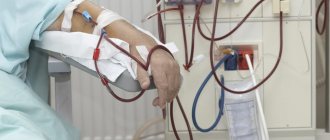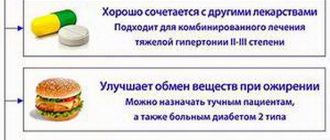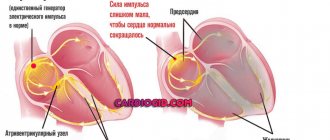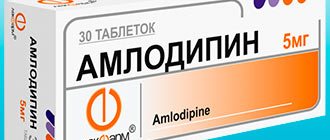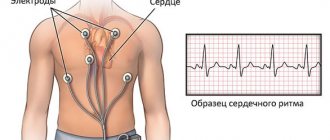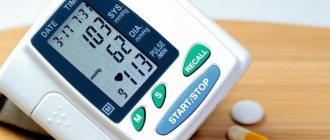When are IVs needed for high blood pressure?
A rapid increase in pressure requires its immediate reduction. Various measures are used for this. You can take medications on your own in the form of tablets to combat the crisis. In cases where such therapy is ineffective and blood pressure levels continue to rise, it is recommended to prescribe antihypertensive drugs drop by drop.
For this purpose, funds from various initiative groups are used. The choice depends on the severity of arterial hypertension, risk group, presence of complications and concomitant diseases. All recommendations for taking the drug are issued after a thorough examination, collection of complaints and the nature of the development of hypertension.
Droppers for hypertension with Aminazine
A dropper for hypertension with Aminazine is used for hypertension of degrees 1 and 2 if the patient experiences panic attacks. Indications for use may include pronounced consequences of dysfunction of the hypothalamus.
The drug begins to act within 10 minutes, its effect lasts for several hours. A dropper for high blood pressure stops an attack, reduces capillary permeability and prevents vasoconstriction. To minimize the risk, the drug is diluted with 0.9% sodium chloride solution, glucose or Novocaine.
If you use Aminazole and Dibazol in combination, you can achieve a lasting effect of the dropper - up to 12 hours.
Side effects of Aminazole include:
- dry mouth;
- nausea;
- vomit;
- allergy;
- tachycardia;
- arrhythmia;
- leukopenia;
- difficulty urinating;
- dermatitis;
- bronchospasm, etc.
What medications are used for high blood pressure and hypertension?
Therapy for arterial hypertension is selected individually, taking into account concomitant pathologies. Selecting the right dose may take some time. It is important during this period to be under the supervision of a doctor and strictly follow his recommendations.
There are several classes of drugs designed to treat high blood pressure. These include:
- ACE inhibitors. This group of drugs is the most common among antihypertensive drugs. It contains Enalapril, Prindopril, Ramipril, Captopril. The latter is used as emergency aid in crisis situations.
- Angiotensin receptor blockers. The group has its advantages in the fight against pathology. These drugs are prescribed for intolerance to ACE inhibitors. Among the drugs in this group are Losartan, Telmisartan, Valsartan.
- Calcium channel blockers. They are prescribed both independently and in combination with other groups. The most famous representative of blockers is Amlodipine. Taking the drug is accompanied by a certain complication, which occurs quite often. This is swelling of the legs that goes away after you stop taking the drug.
- Beta blockers. Bisoprolol is the most prescribed drug in this group. It is used to lower blood pressure and heart rate.
- Diuretics. In addition to combating edema syndrome, medications for hypertension are prescribed. This group of drugs includes Indapamide, Furosemide, Veroshpiron.
The above antihypertensive drugs are prescribed for daily use to control blood pressure. Infusion therapy is recommended when pharmacological treatment fails to achieve target levels. This treatment has a quick effect; it can be prescribed if the patient’s condition is severe, when swallowing functions are impaired.
Magnesia
It is the most commonly used drug for the treatment of hypertensive crisis. The action of the drug is aimed at combating vascular spasm, restoring heart rhythm, and relaxing muscle tone. The recommended dose is 40 milliliters of a 25% solution. The drug is diluted with glucose or novocaine to achieve a greater effect.
The drug is taken strictly under the supervision of a medical specialist.
Aminazine
High blood pressure is often associated with nervous agitation. In order to alleviate the patient's condition, Aminazine is prescribed. The drug expands the lumen of blood vessels and increases their permeability.
It takes a few minutes for the drug to take effect. Prescribed in conjunction with Dibazol. The presence of liver pathology excludes the possibility of using the drug. Aminazine is diluted with physiological solution before injection. This is done to minimize the risk of side effects.
Papaverine
The drug improves blood circulation, which relieves headaches and dizziness that occur with high blood pressure. The effect of Papaverine is achieved within a few minutes. The duration of action of the drug is several hours. This fact allows the drug to be used in the initial stages of arterial hypertension.
Dibazol
The use of the drug is recommended in case of uncomplicated crisis. It is designed to combat vascular spasm, improve blood circulation in the heart and brain. The effect of the drug administration occurs within 20 minutes.
However, the duration of action of Dibazol is not long, about 4 hours. Frequent use of the drug can cause the opposite effect, which is expressed by an increase in blood pressure. To enhance the hypotensive effect, it is prescribed in combination with papaverine.
Give me an IV!
“Doctor, why weren’t they prescribed IVs for me? You stuff them with pills, but don’t treat them.” Such remarks from patients are not uncommon. The vast majority of our compatriots, especially middle-aged and elderly people, unquestioningly believe in the healing power of infusions and happily provide their veins for traumatic manipulations. At the same time, in the West, infusion therapy is used only in exceptional cases. Let's figure out which tactics are optimal.
Subtleties of introduction
A drip, or intravenous drip infusion, is a method of delivering various solutions, usually of an impressive volume (100–500 ml) directly into the blood. This type of drug administration gained particular popularity in Soviet medicine in the second half of the last century, and for good reason.
Additional medications for drip administration
When treating a crisis of arterial hypertension, in addition to the main groups of drugs, additional drugs are used for symptomatic treatment.
No-shpa
The active ingredient of the drug is drotaverine. The drug has an antispasmodic effect and relaxes vascular tone. This leads to the expansion of the lumen of blood vessels, improved blood circulation and, as a result, a decrease in blood pressure. In the treatment of hypertensive crisis, it is used very rarely and with caution. The indication for visiting NO-shp is severe headaches caused by the crisis.
The dose of the drug is 6 ampoules for intramuscular administration and 2 ampoules for intravenous administration per day.
Taking the drug is contraindicated in case of prostate adenoma, glaucoma, cardiac or vascular failure in the acute period, or an allergic reaction to the components of the drug.
Anaprilin
An antihypertensive drug used in the treatment of high blood pressure. The drug is available in the form of tablets in dosages of 10 and 40 milligrams. The drug is not used to treat hypertensive crisis. Anaprilin is used for daily blood pressure control.
Pindolol
A beta-blocker drug prescribed to control high blood pressure, heart rate and arrhythmias. Pindolol is diluted in glucose for greater effect. The effect of the drug is assessed by continuous monitoring of blood pressure. Slow intravenous administration ensures a rapid drop in readings.
Enalaprilat
An ACE inhibitor is used to treat high blood pressure. It is the drug of choice due to its rapid and long-lasting effect. Enalaprilat is approved for use in heart failure and heart attack.
Phentolamine
A drug for hypertension caused by pheochromocytoma. Phentolamine has a rapid but short-lasting effect. This property allows it to be used at low values of the measured indicator. Its action is based on its vasodilating effect, as well as its ability to improve blood circulation. This helps get rid of headaches, weakness, and instability when walking.
Urapidil
An antihypertensive drug used as therapy to maintain normal blood pressure values. It is available in various forms. Drip administration is indicated for the treatment of arterial hypertension in a hospital. It is prescribed taking into account concomitant pathology and risk level.
Furosemide
To reduce edema syndrome, a diuretic is used. This condition occurs in heart failure, kidney failure and many other diseases. Furosemide is used to quickly reduce high blood pressure.
However, due to possible side effects, they try to use it as rarely as possible. A diuretic removes potassium and magnesium from the body, which leads to seizures. It is recommended to take furosemide only after consulting a doctor.
Verapamil
A calcium channel blocker is used for hypertensive crisis, arrhythmia and angina pectoris. The drug is administered intravenously, by drip, under the control of blood pressure and pulse. To lower blood pressure, it is advisable to give 5-10 milligrams of the substance. If there is no effect, the dropper is repeated after 30 minutes.
Magnesia dropper for high blood pressure
A dropper for high blood pressure can be supplied with Magnesia. The main actions of the drug are:
- relieving vasospasm,
- normalization of heart function;
- relaxation of the muscular system.
Additional positive effects of Magnesia include reducing the risk of developing atherosclerosis, cholesterol plaques and thrombosis, and preventing heart attack or stroke.
However, this drug has many contraindications and side effects, so intravenous administration of Magnesia is strictly controlled by medical personnel.
The main side effects are:
- vomit,
- nausea,
- diarrhea,
- stomach upset,
- frequent urination,
- cephalgia,
- disruption of the heart and blood vessels,
- headache,
- breathing disorder,
- loss of consciousness.
Despite the possible side effects, a Magnesia dropper can normalize blood pressure and eliminate the symptoms of the disease. You can put an IV in case of hypertension 1-2 times a day. During one session, 40 ml of the drug is administered. For a pressure dropper, use a solution of Magnesia 25% with glucose or a 5% solution of Novocaine. Instead of glucose or Novocaine, sodium chloride can be used to minimize risks and prevent negative consequences.
If there is a deterioration in health, the IV will need to be turned off.
Intravenous administration of Magnesia is contraindicated in:
- violation of the sinus rhythm of the heart with a beat rate of less than 60 per minute;
- disorders of the heart muscle;
- intestinal obstruction;
- kidney problems;
- dehydration;
- breathing problems;
- pregnancy and lactation;
- internal bleeding.
Course duration and frequency of use
Treatment of arterial hypertension is a long process. Therapy is selected individually and depends on many factors. In order to control indicators, it is recommended to take drugs with a cumulative effect. Ambulance is used to alleviate a crisis.
If you cannot lower your high blood pressure on your own, you should seek help from a doctor.
To quickly and effectively control arterial hypertension, drip therapy using various drugs is used. Frequent surges in blood pressure can cause serious complications. Stress and withdrawal or refusal of antihypertensive treatment contribute to the onset of a hypertensive crisis.
The duration of treatment is determined individually, depending on the severity of the disease and concomitant pathology.
